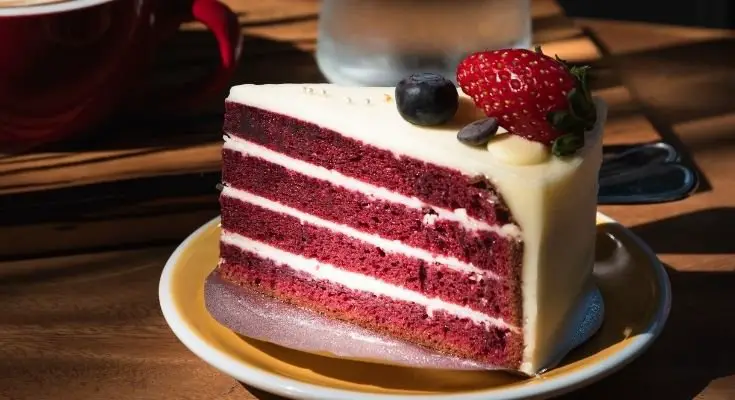Red velvet cake is a traditional chocolate cake made with cocoa, red food coloring, and buttermilk. It was labeled after the reddish-brown color of the cake and the cream cheese frosting that is recurrently used to top it. The exact origin of red velvet cake is unknown, but some believe it was invented in New York City in the early 1920s.
What does red velvet cake have to do with slavery?
Red velvet cake is a customary dessert served during the winter holidays. However, many people are unaware that red velvet cake has a tumultuous history.
In the early 1800s, enslaved African-Аmericans created the first red velvet cakes. They dyed the cake red with beets and added cocoa powder to give it a chocolate flavor. The enslaved people believed that the red color represented Christ’s blood and that the cocoa powder would bring them good luck.
Red velvet cake, despite its festive appearance, was quite sinister. The cocoa powder used by enslaved people was high in caffeine and sugar, providing them with the energy to work long hours in the fields. And because the beet juice was used as a natural dye, the enslaved people couldn’t wash the red color away no matter how hard they tried.
Where did red velvet start?
Although red velvet cake is usually linked with the taste, it is a form of cake that originated in the United States. During the 1970s, a cook called Diane von Furstenberg came up with the idea for the cake, which she served at one of her New York City restaurants.
When did red velvet cake become popular?
Red velvet cake has been present since the 1600s, but it wasn’t popular until the late 1800s when it was introduced to the public. In its original form, it was intended to be served as a celebration cake on special occasions such as Valentine’s Day or New Year’s Day. After some time had passed, red velvet cake grew increasingly popular, and it began to be served as a regular dessert. In today’s society, red velvet cake is a must-have for birthday celebrations and other special occasions.
What does a red velvet cake symbolize?
Red velvet cake is generally linked with Valentine’s Day, but there’s more to the story than love at the heart of this confectionary confection. The color red is connected with passion and fire, so it’s popular in meals such as red velvet cake and other similar confections. As a bonus, the flavor is rich and sweet, making it an excellent choice for special occasions.
What’s so special about red velvet cake?
Red velvet cake is a popular dessert choice typically appreciated for its distinct flavor and look. This cake is constructed with a chocolate cake that has been dyed with red food coloring and then frosted with a sweet, creamy frosting that is flavored with vanilla. Cake with a crimson tint and a rich, chocolaty flavor is the outcome of this recipe. Some people believe that the distinct flavor of red velvet cake distinguishes it from other desserts. Others argue that the distinctive texture distinguishes it from the crowd.
Fun Facts of Red Velvet Cake:
- Red velvet cake is usually served during the winter holidays.
- It’s considered to be the official cake of the holiday season.
- Red velvet cake is the most expensive cake in the United States.
- It was invented by a woman called Diane von Furstenberg.
- Red velvet cake was first introduced in the 1970s.
- The cake is so popular that it’s sold in some supermarkets and bakeries.
- Red velvet cake is usually served with a frosting that has vanilla flavor.
- The cake is usually eaten with a spoon.
- Some people believe that the distinctive flavor of red velvet cake distinguishes it from other desserts.
- The cake is popular in the United States.
Reference:
Resource 01: The Washington Post
Resource 02: Wikepedia
